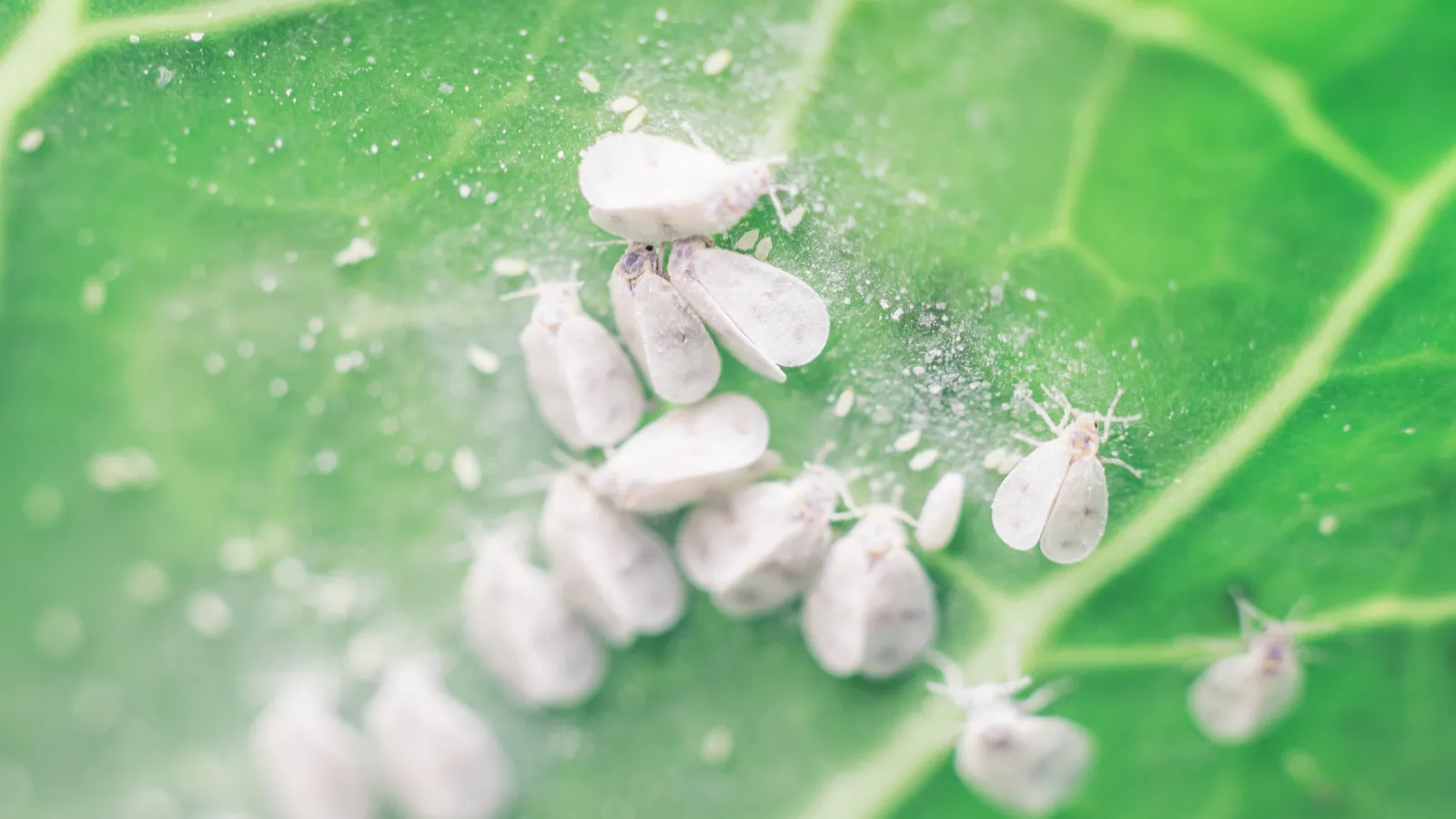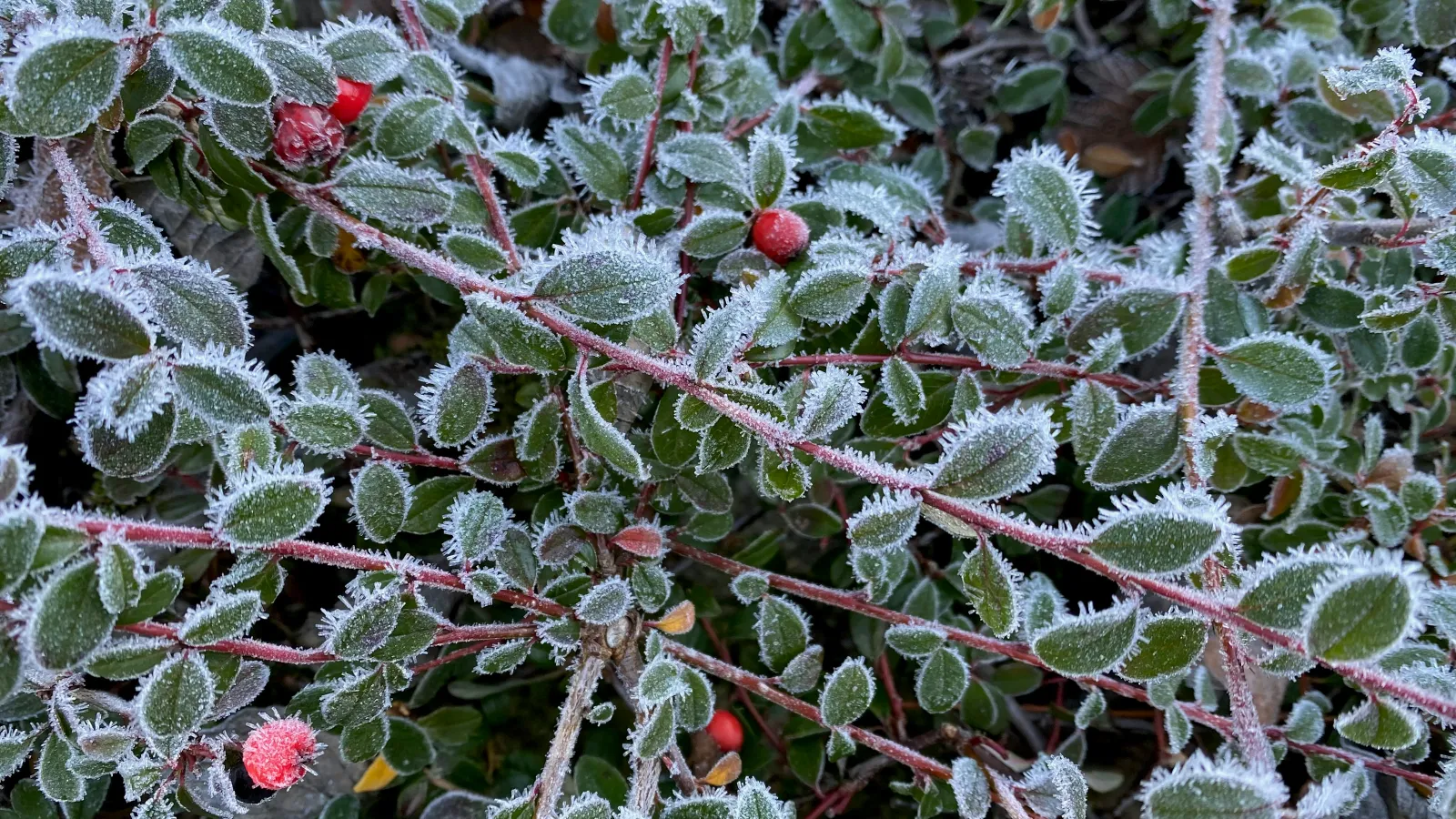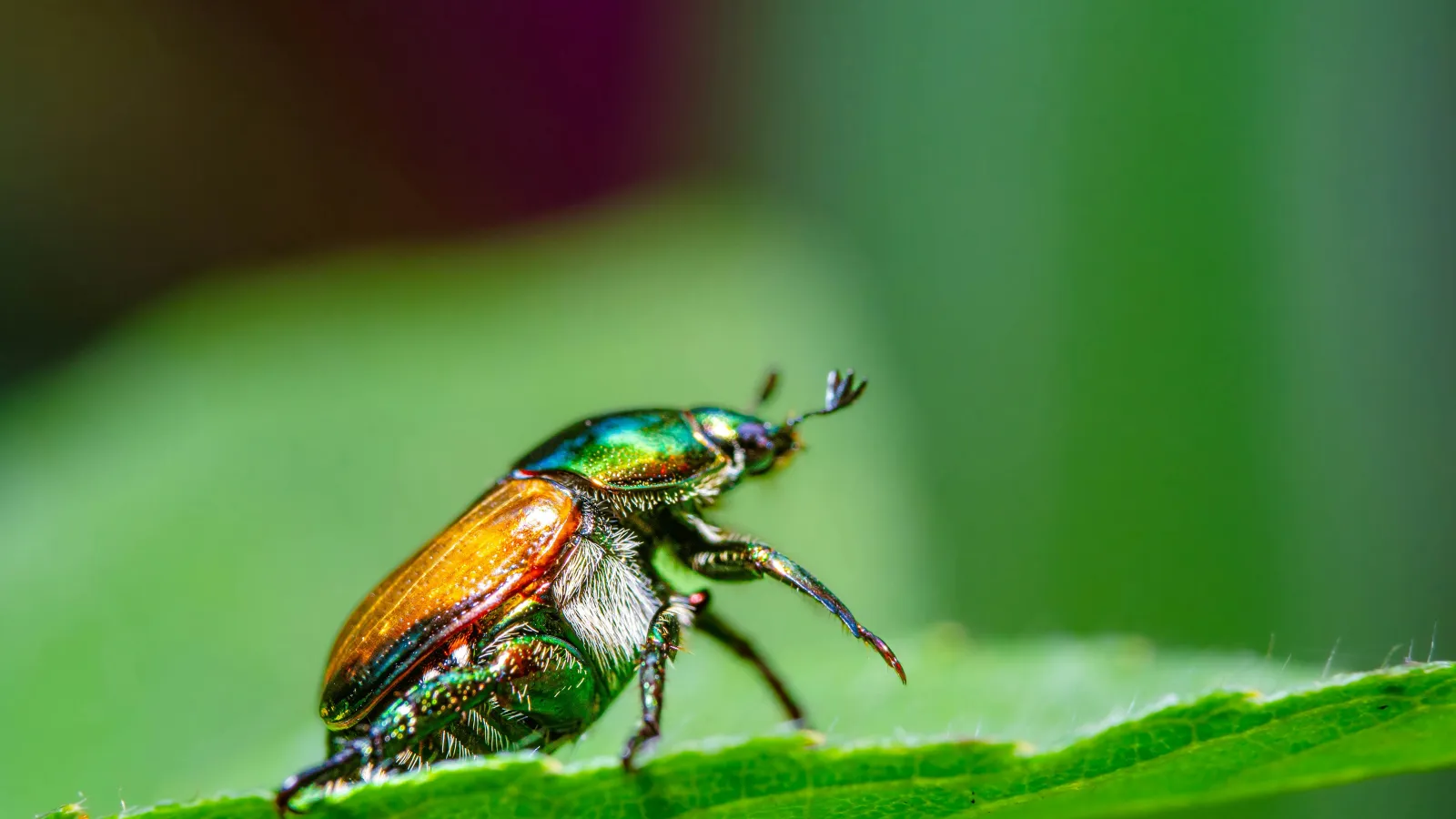
Whiteflies
If the leaves on your shrubs are turning yellow, wilting, or dying, you may have an infestation of whiteflies. There are over 1500 different species of whiteflies globally, and the southeastern United States is home to more than 75 of these species.
How They Get Their Name
The wings and bodies of the adult whiteflies are covered with a fine, powdery, or flour-like white wax. This is how they get their name. Despite their name, whiteflies are not a type of fly, although they do have wings and are capable of flying. These tiny pests are soft-bodied, winged insects are Hemipterans-an order of insects that also includes cicadas, aphids, and bed bugs.
Whitefly Identification
These tiny flies (but they're not a fly-see above) are about 1/12 of an inch, are somewhat triangular in shape, and are often found in clusters on the undersides of leaves. Whiteflies are often mistaken for aphids. But because whiteflies are active during the day and scatter when disturbed, they are easier to identify and spot than their nocturnal doppelganger. Whiteflies don't do well in cold weather, so we see them more often in the summer - when it's warm and humid.
Species of Whiteflies
As mentioned above, there are over 1500 different species of whiteflies. Some common ones include:
- Citrus whitefly
- Silverleaf whitefly
- Greenhouse whitefly
- Bandedwinged whitefly
- Giant whitefly
What Plants Do They Like?
Whiteflies can be found on a wide variety of plants, from ornamental flowers to warm-weather vegetables, including tomatoes, eggplant, peppers, and okra. Some species can attack sweet potatoes, plants from the cabbage family, and citrus plants. Indoors, they will feed on most common houseplants, especially those with soft, smooth leaves. The citrus whitefly likes gardenias and feeds itself by extracting plant sap.
Their Damage
Like aphids, whiteflies use their piercing mouthparts to suck plant juices and, in turn, produce and secrete a sticky substance known as honeydew. Honeydew left on its own can cause fungal diseases like sooty mold to form on the plant leaves. Whiteflies can cause the same damage as aphids:
- Stunts plant growth
- Leaves change to yellow and can die
- Excretes and leaves behind a honeydew substance which can cause sooty mold
Checking For Whiteflies
When checking on the health of your plants, check the undersides of leaves, especially around the veins, for white insects. Even if whiteflies aren't visible, feel the leaf surface for sticky honeydew. If the whiteflies are feeding, they'll quickly fly off the leaves in a swarm. You may also find eggs on the undersides of leaves. This means a new generation is on its way. And get this-adult females can produce up to 400 eggs, which hatch in about one week to a month after laying. When the eggs hatch, the larvae will look like tiny white ovals without legs. They don't move, but they immediately start sucking the plant juice.
Tips For Getting Rid of Whiteflies
- Spray with water. The first line of defense is to gently spray the infected plant(s) with water to dislodge whitefly eggs and nymphs. Because nymphs don't move after the initial creeping phase, they will starve and die when removed from their food source.
- Keep leaves clean. To control honeydew and mold, wipe down affected leaves with a damp cloth or spray with water.
- Use insecticidal soap. For heavier indoor or outdoor infestations, use insecticidal soap. It coats the eggs, larvae, and adults, suffocating them. Apply in the early morning or evening when temperatures are cooler, and repeat according to instructions.
- Try horticultural oil. Oils smother insect eggs that are over-wintering and suffocate them. They most commonly work by coating and clogging the insect's spiracle—the pores insects use to breath. This remedy will kill whiteflies at all life stages and discourage black sooty mold if applied at the correct time.
- Use yellow sticky traps. Whiteflies are attracted to the yellow color and become stuck to the glue-like substance.
- Use reflective mulch. Cover the ground around susceptible plants such as tomatoes and peppers with metallic fabric mulch. The reflective material is confusing to them, and they will avoid the area.
- Get professional shrub and tree care. A professional lawn care company can provide year-round protection for your landscape and apply the appropriate product at the proper time in the proper amounts.
Leave It to the Experts
To keep your shrubs the healthiest they can be, check them regularly for any insect infestation. It's always easier and more effective to be on a tree and shrub program. Being proactive with your shrubs and plants instead of reactive is always the better choice. Contact Turf Masters today to learn more and get your free evaluation.
Header Photo Credit: James Castner, University of Florida/IFAS.

